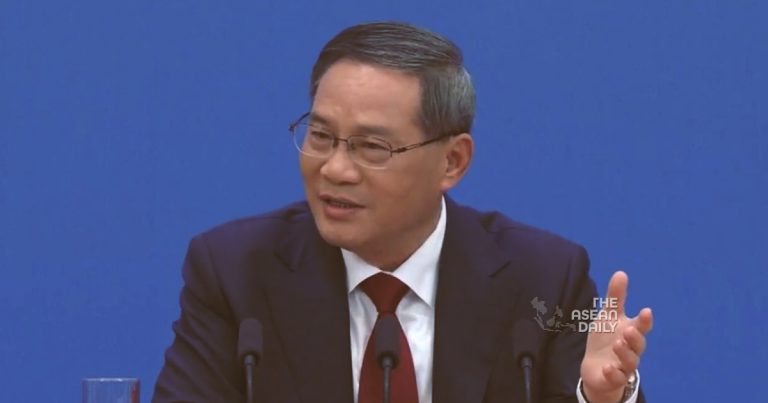27-8-2023 (BEIJING) Since assuming the role of China’s premier in March, Li Qiang has been under the spotlight, with investors and China observers keen to gauge the extent of his influence as he strives to stabilize the world’s second-largest economy amidst unprecedented challenges.
The global pandemic and persistent decoupling efforts by Washington since 2018 have significantly disrupted China’s economic landscape. This has led to soaring youth unemployment rates, a deepening property crisis, hesitancy among households to spend, waning investor confidence, deflation concerns, and shortcomings in technological capabilities.
Under the leadership of President Xi Jinping, who holds substantial power, Li has taken on a central role in addressing the ongoing economic crisis since June. His early actions include a visit to Germany and France, where he sought to reassure business leaders about investing in China. On the domestic front, he organized a symposium with economists in July and held a meeting with eight provincial leaders in Shanghai last month.
What makes Li’s return to Shanghai noteworthy is that this is where he faced the most significant challenge of his four-decade political career. As the city’s Communist Party secretary from 2017 to 2022, he oversaw widespread lockdowns last year due to the COVID-19 pandemic, which had severe economic repercussions.
Reviving consumer confidence and encouraging spending presents a significant challenge, and some experts are skeptical about Li’s economic strategies, policy coordination, and priorities. Chen Gang, deputy director of the National University of Singapore’s East Asian Institute, emphasizes that while Li has the political backing to enact bold reforms and economic policies, timing these interventions is crucial.
Unlike previous premiers, Li did not have the luxury of five years to familiarize himself with central government operations and national economic affairs before taking office. He has spent his initial months as premier comprehensively assessing China’s economic landscape. Key concerns include the underdeveloped western region, highly indebted local governments, cabinet policymaking, and managing external pressures.
Li’s approach has involved touring eight provinces and municipalities in the past five months, with visits to various manufacturing facilities, poverty-alleviation campaigns, and inspections of advanced manufacturing progress.
Despite China’s 5.5% year-on-year growth in the first half of this year, concerns linger about the feasibility of China surpassing the US economically. Some analysts worry about the possibility of China experiencing a fate similar to Japan with decades of stagnation.
China’s 6.3% GDP growth in the second quarter, year on year, is seen as weak considering the low comparison base with the same period last year. Sequentially, second-quarter GDP growth was only 0.8%, down from 2.2% in the first quarter.
Li faces the challenge of operating within defined boundaries that limit options for economic stimulus. The political environment is more restrictive, and massive infrastructure-driven stimulus plans are currently off the table.
The government has outlined significant policy changes, including optimizing real estate policies and boosting Big Tech and private-sector development. These measures aim to rejuvenate the economy.
However, concerns persist about the concrete impact of these policies and their ability to counteract China’s economic woes. Policymakers are also trying to reassure domestic private entrepreneurs and foreign investors.
Li’s economic revival plan hinges on the support of other influential figures in President Xi’s inner circle. A personnel reshuffle within the cabinet is ongoing and critical for policy implementation.
Foreign observers are eagerly watching to see if real policy shifts occur and whether further changes or crackdowns align with President Xi’s objectives.
As China faces challenges both domestically and on the international stage, the country’s economic trajectory remains a topic of keen interest and scrutiny.




